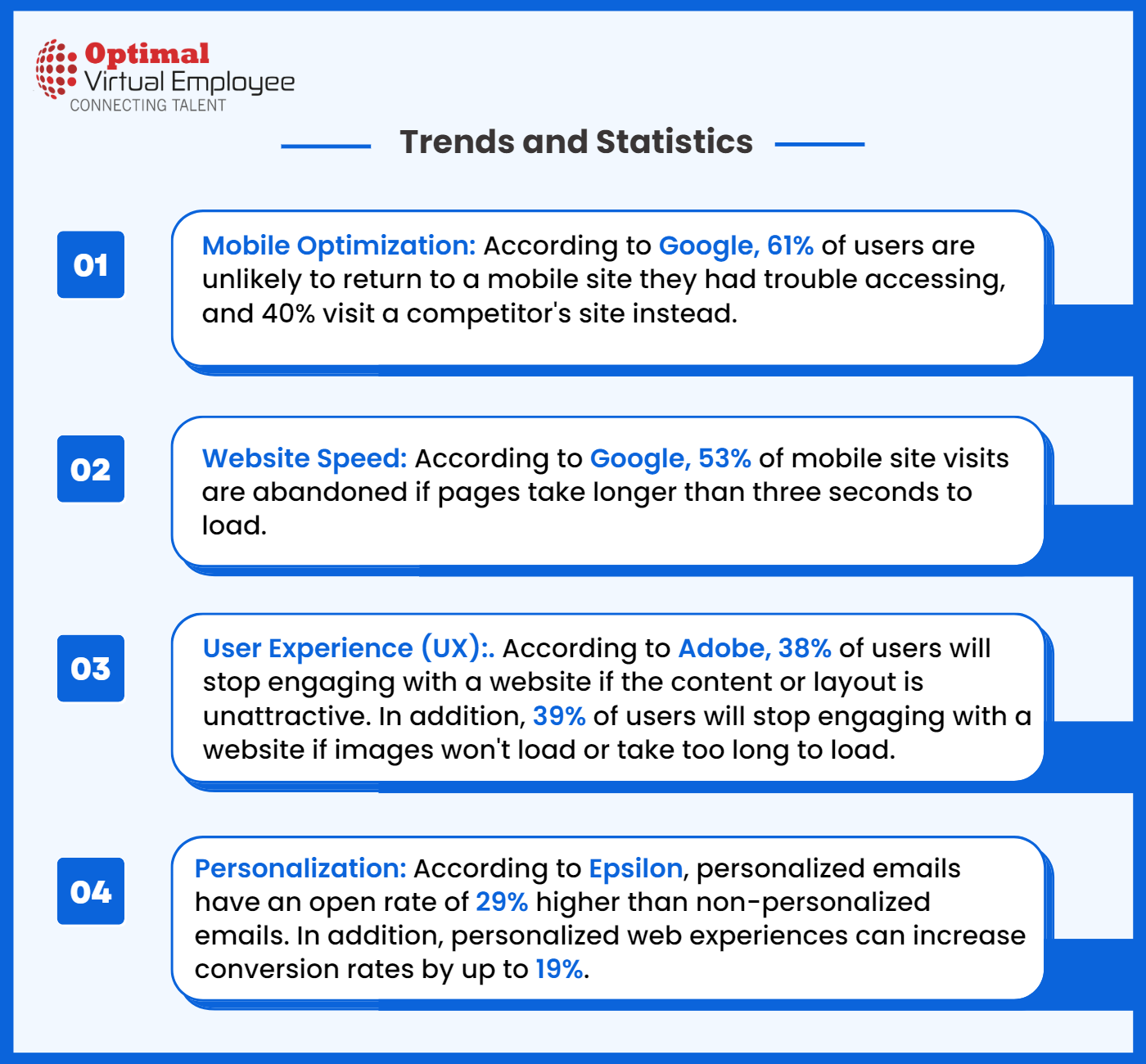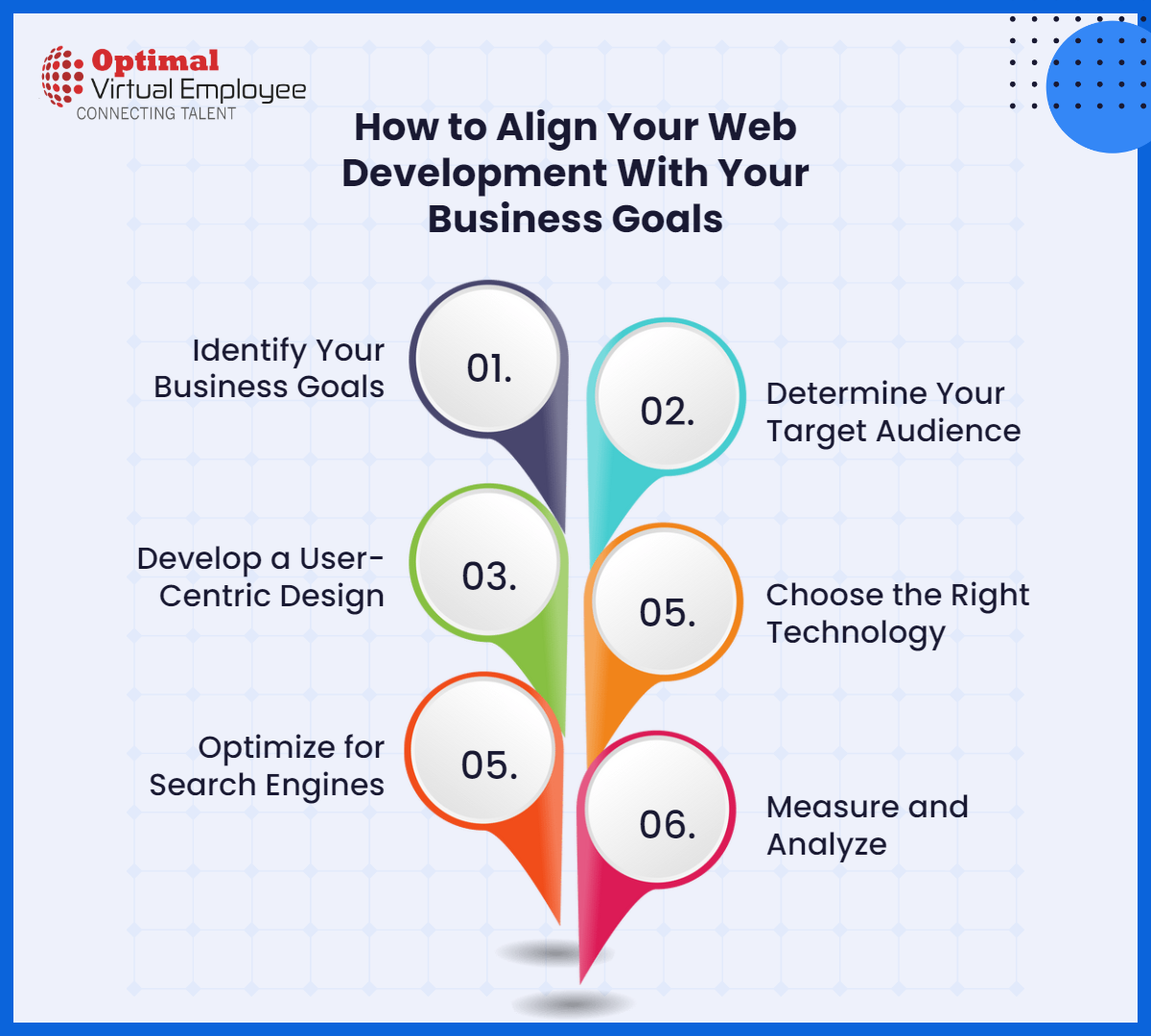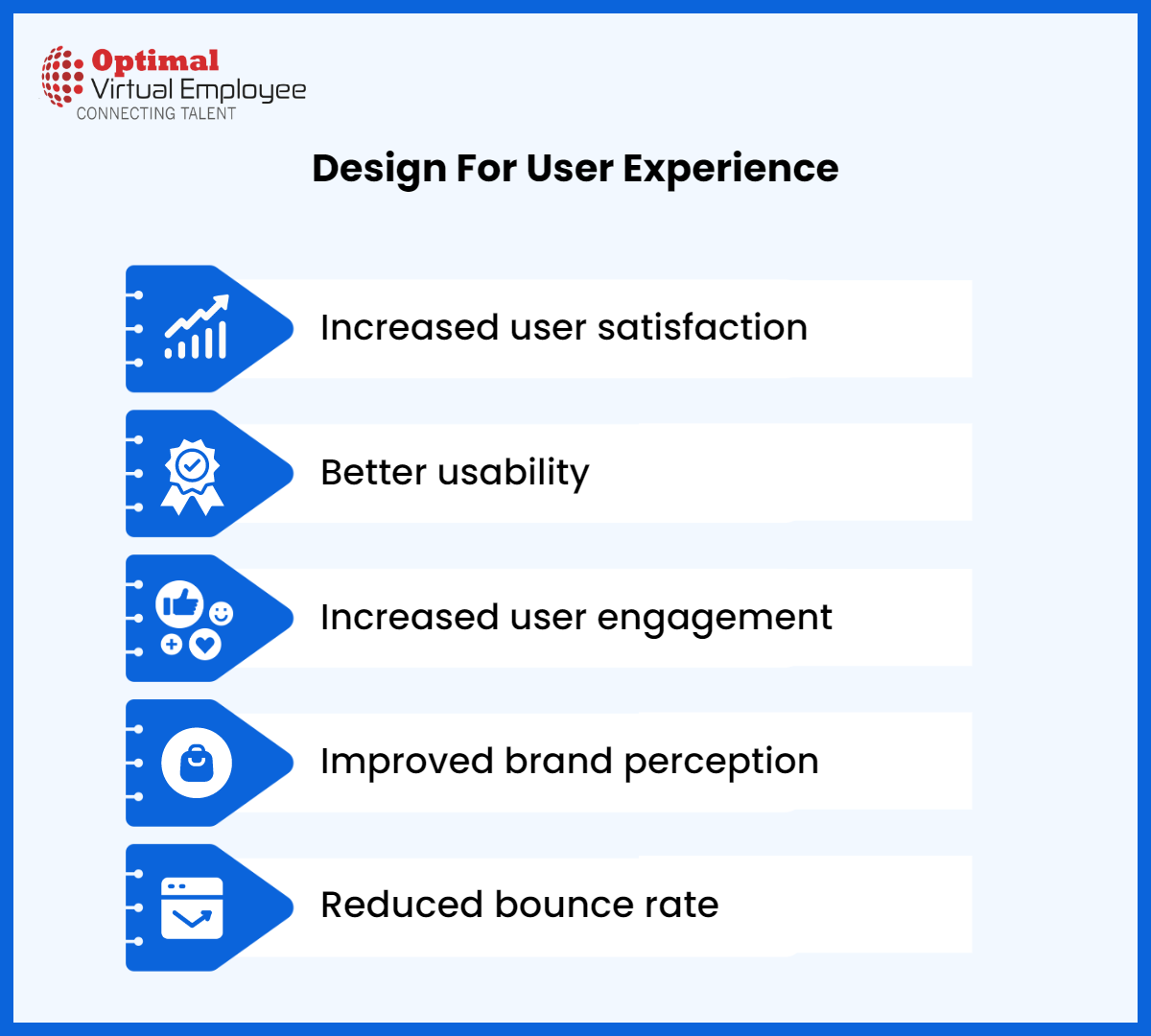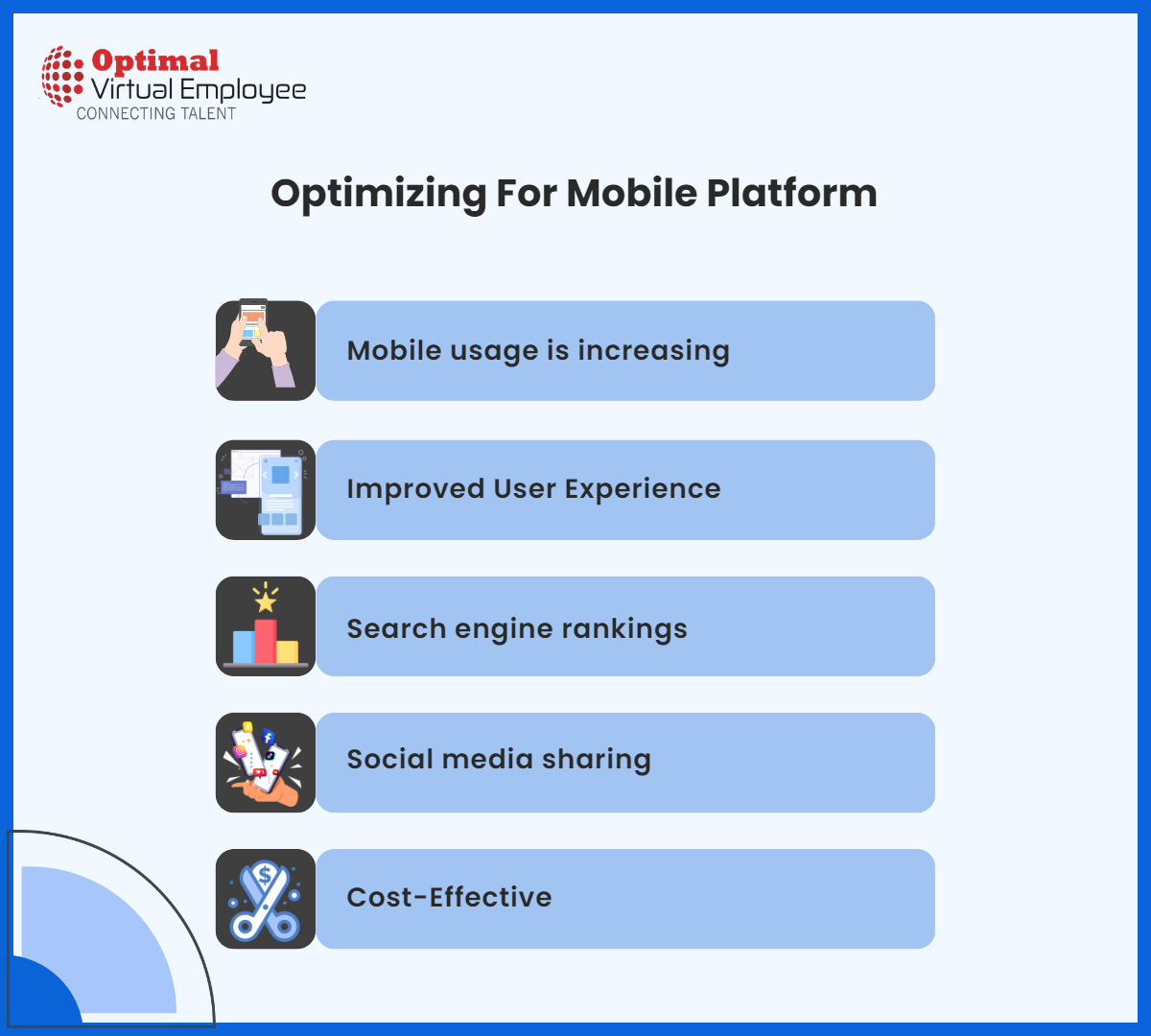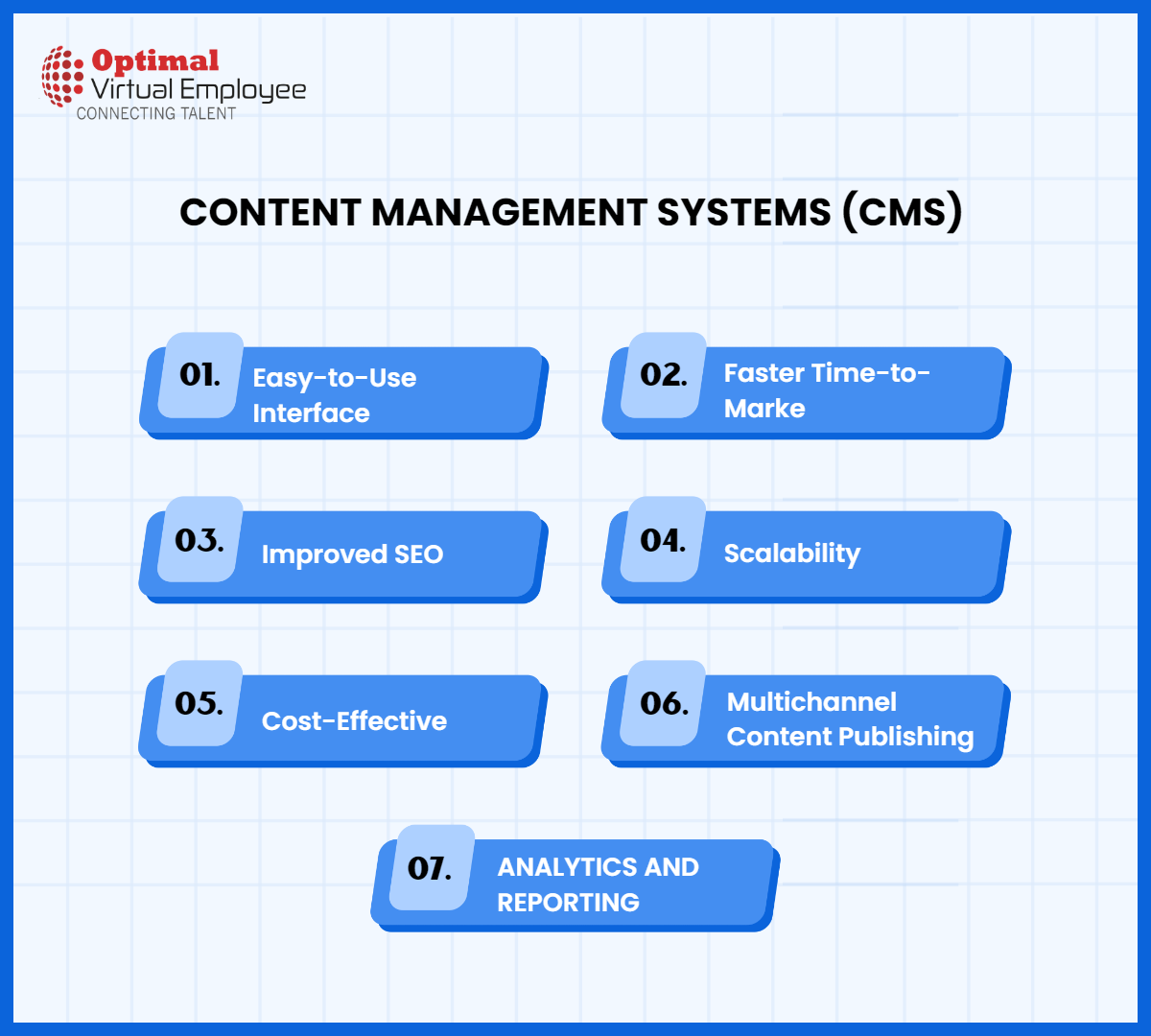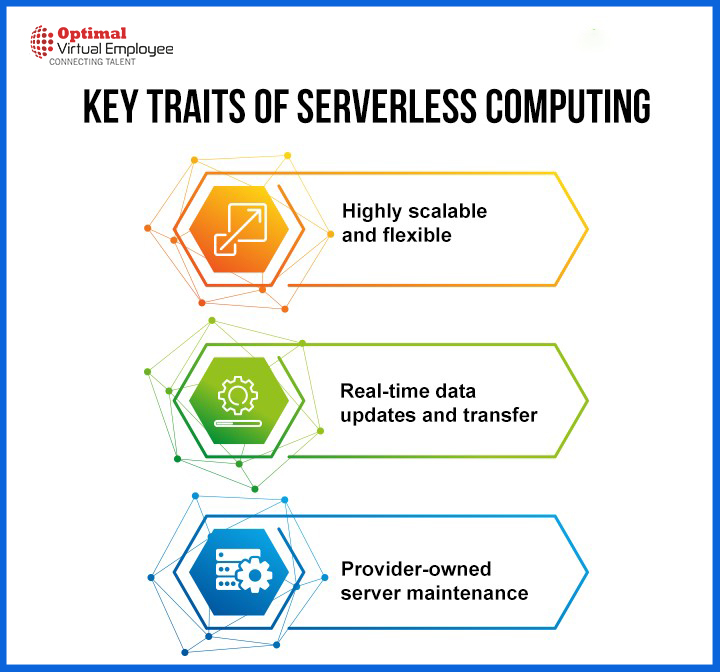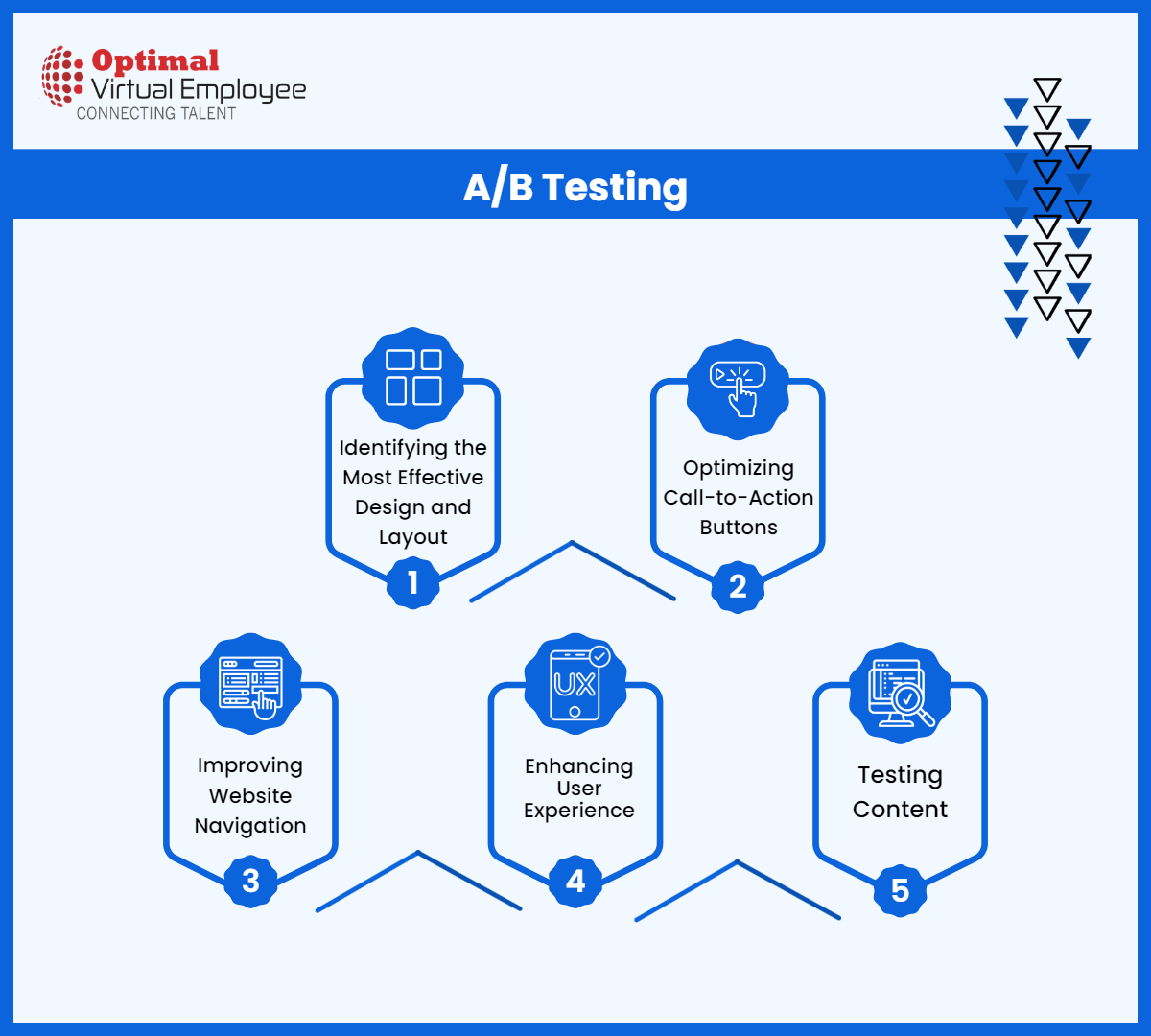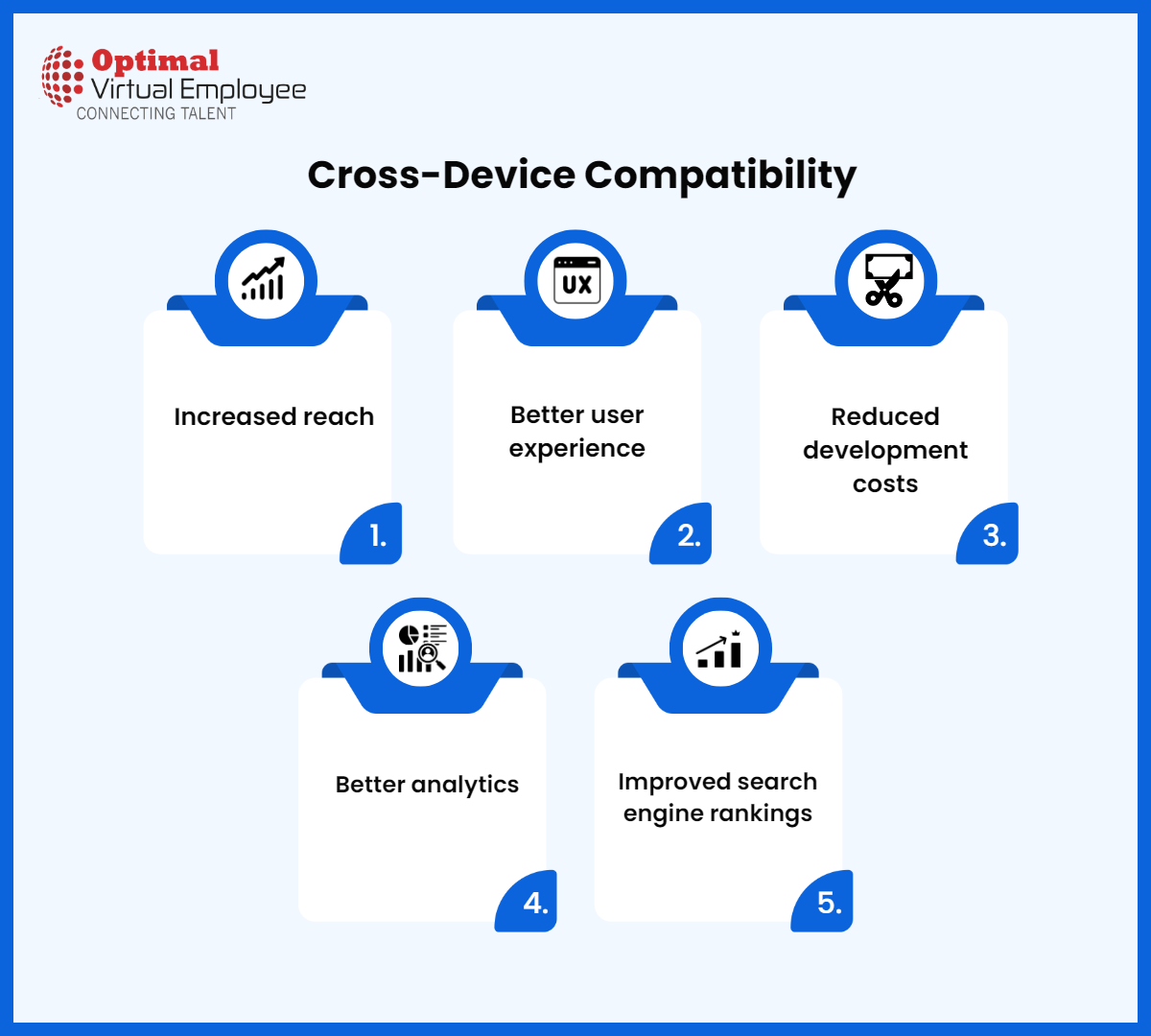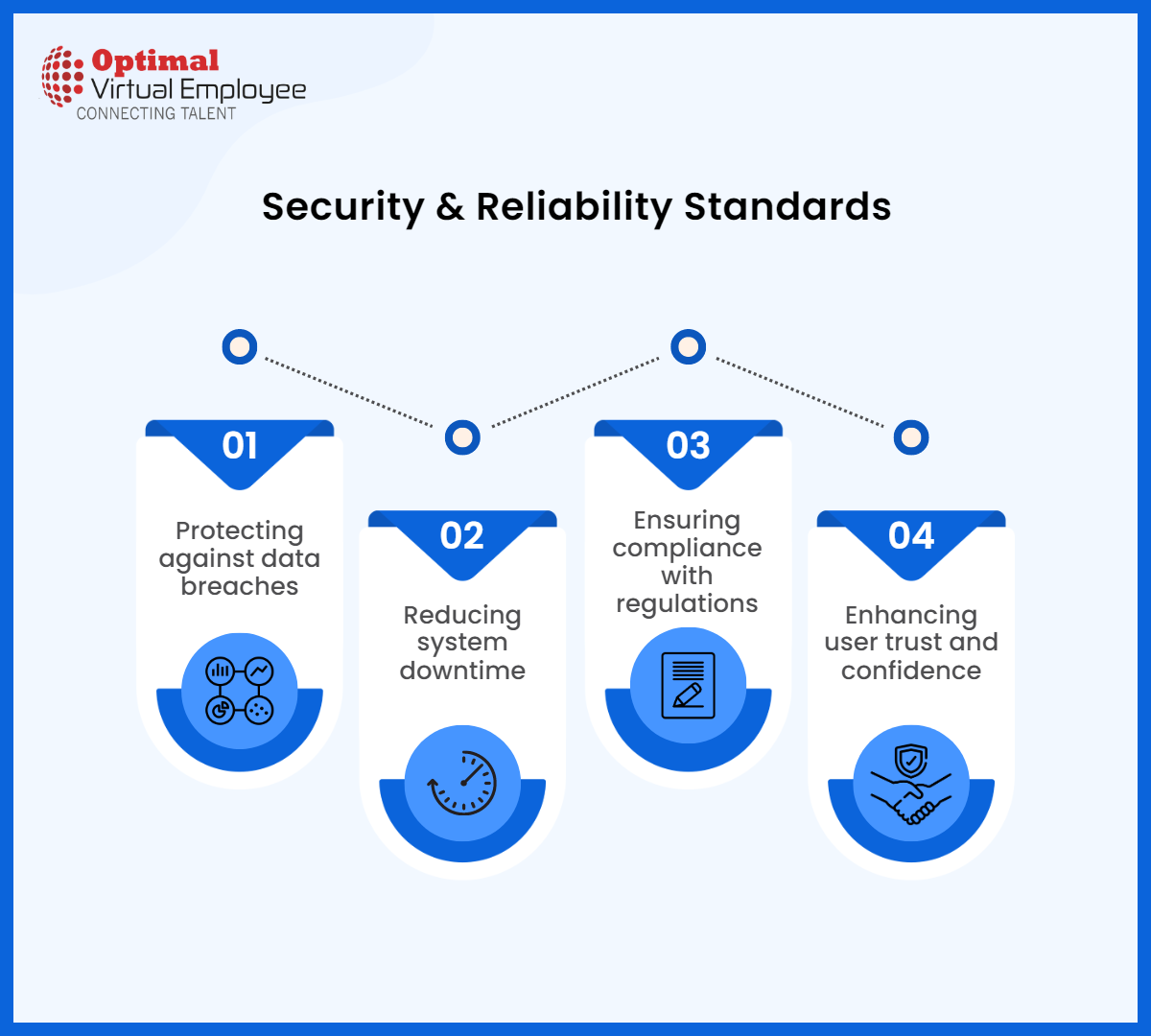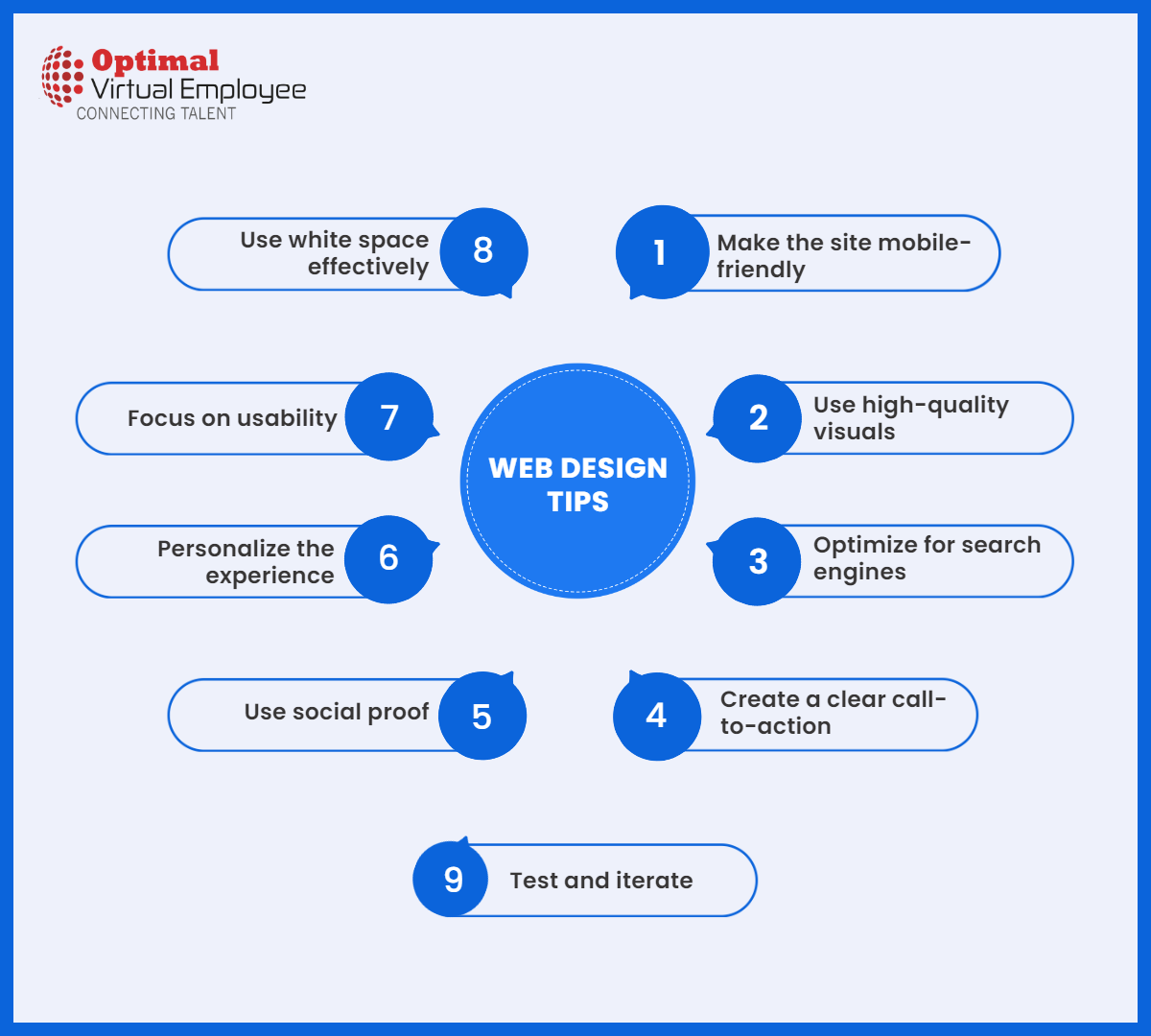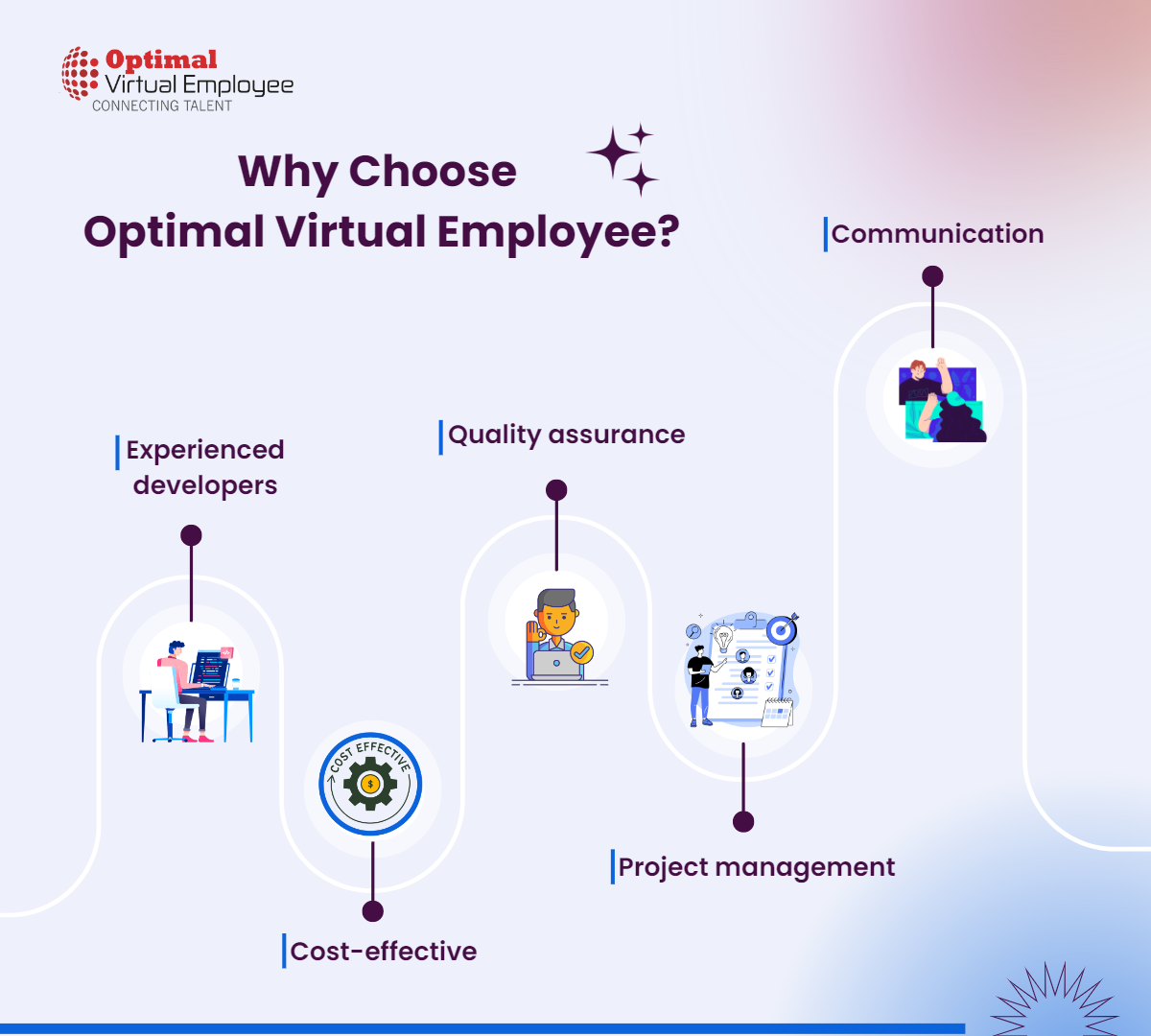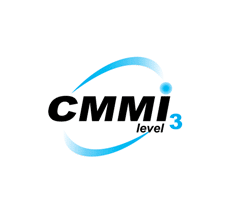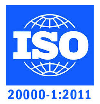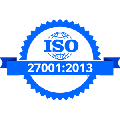In today’s digital age, your organization’s online presence is a cornerstone of success. As CXOs, you understand the critical importance of harnessing effective web development strategies to drive business growth and maximize return on investment (ROI).
A well-executed web development approach has the power to create exceptional user experiences, boost conversions, and position your business as a leader in the digital landscape.
This comprehensive guide, “Maximizing ROI with Effective Web Development Strategies for Businesses,” is specifically crafted to empower you, the CXOs, with the knowledge and insights necessary to optimize your web development efforts and propel your business to new heights.
The digital imperative has never been more evident. Your organization’s website serves as the virtual storefront, the primary touchpoint through which customers engage with your brand, products, and services.
As CXOs, you bear the responsibility of spearheading your organization’s digital strategy, and web development plays a pivotal role in this journey.
With the increasing reliance on digital channels, an effective web development strategy can provide the competitive advantage you need to thrive in today’s dynamic marketplace.
By harnessing the power of web development, you can deliver seamless user experiences, foster customer trust, and drive revenue growth.
Trends and Statistics
– Mobile Optimization: With the rise of smartphones and tablets, more people are accessing the internet on mobile devices than ever before. Mobile devices now account for over half of all internet traffic worldwide. This means that it’s crucial to have a mobile-optimized website that looks and functions well on smaller screens.
– Website Speed: Website speed is another critical factor that affects user experience and conversion rates. In addition, a one-second delay in page load time can result in a 7% reduction in conversions. This means optimizing your website’s speed to maximize ROI is crucial.


How to Align Your Web Development With Your Business Goals
Web development is essential to running a business in the digital age. It plays a crucial role in establishing an online presence, attracting customers, and driving revenue growth. However, web development must align with your business goals to be successful. Let’s discuss how you can align your web development with your business goals.



– Choose the Right Technology: The technology you choose to build your website on can significantly impact your ability to achieve your business goals. Choosing the right technology will depend on your goals, budget, and timeline. You may consider using a content management system (CMS) like WordPress, which is easy to use and provides flexibility and scalability.
– Optimize for Search Engines: Search engine optimization (SEO) is critical to the success of your website. SEO helps improve your website’s visibility in search engine results, which can increase traffic and generate more leads or sales. Ensure that your website is optimized for search engines by following best practices like using relevant keywords, creating quality content, and building high-quality backlinks.
– Measure and Analyze: To ensure that your web development efforts are aligned with your business goals, you need to measure and analyze your website’s performance. Tools like Google Analytics can help you track key metrics like traffic, bounce, and conversion rates. Use this data to identify areas of improvement and make necessary changes to optimize your website further.
Aligning your web development efforts with your business goals is essential to achieving success in the digital age. By identifying your goals, understanding your target audience, developing a user-centric design, choosing the right technology, optimizing for search engines, and measuring and analyzing performance, you can build a website that drives growth and revenue for your business.
Importance of Tailoring Your Website for Your Target Audience
In today’s digital age, having a website for your business is essential. However, simply having a website is not enough to ensure success. To truly make an impact and stand out in a crowded online marketplace, it is important to tailor your website to your target audience. Here are several reasons why this is crucial:
Better User Experience
A website tailored to your target audience will offer a better user experience. Visitors to your site are more likely to stay on your site longer and engage with your content if it speaks directly to their needs and interests. By understanding your target audience’s preferences and behaviors, you can design a website that is easy to navigate, visually appealing, and provides the information they seek. This leads to increased satisfaction and more positive interactions with your brand, ultimately increasing conversions and sales.
Increased Conversions
Tailoring your website to your target audience can lead to increased conversion rates. When your website speaks directly to your target audience’s needs and interests, they are likelier to take the desired action, such as purchasing or filling out a form. A website that is not tailored to your target audience is unlikely to convert visitors into customers. However, by customizing your website to fit your target audience’s specific needs and interests, you can increase the likelihood of turning website visitors into customers.
Improved Search Engine Optimization (SEO)
When you tailor your website to your target audience, you are more likely to use keywords and phrases that they are searching for. This can improve your search engine rankings and make it easier for your target audience to find you online. By optimizing your website’s content, structure, and design to fit the needs of your target audience, you can improve your search engine rankings and increase visibility in search results.
Competitive Advantage
You can differentiate yourself from competitors by tailoring your website to your target audience. Your website will stand out as cand appealing to your target audience, making it more likely that they will choose you over your competitors. This can be especially important in industries with high competition, where small differences in website design and content can greatly impact consumer choices.
Increased Brand Loyalty
A website tailored to your target audience can help build brand loyalty. By providing a positive user experience and meeting their needs, you can create a connection with your target audience that will keep them coming back to your site and recommending you to others. This can increase customer retention, a larger customer base, and a more positive brand reputation overall.
Tailoring your website to your target audience is critical for achieving online success. By providing a better user experience, increasing conversions, improving SEO, gaining a competitive advantage, and building brand loyalty, you can create a website that speaks directly to your target audience and drives business growth.
Modern Web Development Trends To Increase ROI
1. Design For User Experience
Designing for user experience (UX) is essential for maximizing return on investment (ROI) with effective web development strategies. Here are a few ways UX design can help in this regard:
– Increased user satisfaction: A well-designed website focusing on user experience can enhance user satisfaction. Happy users are more likely to return to the website, refer it to others, and make purchases or take desired actions, resulting in higher ROI.
– Better usability: A website that is easy to navigate, with clear and concise content, is more likely to convert visitors into customers. A good UX design can improve the website’s usability, resulting in higher engagement and conversion rates.
– Increased user engagement: A website with a good UX design can keep users engaged for longer, leading to higher ROI. This can be achieved by using interactive elements, clear and concise content, and a visually appealing design.
– Improved brand perception: A website with a poor user experience can negatively impact the brand image. Conversely, a well-designed website can enhance brand perception, increasing customer loyalty and ROI.
– Reduced bounce rate: A website with a poor UX design will likely have a high bounce rate, meaning visitors leave the website without taking action. A good UX design can reduce the bounce rate, leading to higher engagement and conversion rates.
Investing in UX design can help maximize ROI with effective web development strategies. By focusing on user satisfaction, usability, engagement, and brand perception, and reducing the bounce rate, businesses can create a website that looks great and performs well.
2. Optimizing For Mobile Platform
Optimizing for mobile platforms has become increasingly important in maximizing ROI with effective web development strategies. With the growing number of smartphone users and the shift towards mobile browsing, businesses must ensure that their website is mobile-friendly to capture this audience.
Optimizing for mobile platforms can play a significant role in maximizing ROI with effective web development strategies. Here are a few ways how:
– Mobile usage is increasing: Mobile usage has become the norm with the rise of smartphones and tablets. As per recent statistics, more than half of the global website traffic comes from mobile devices. Therefore, optimizing for mobile platforms can help you reach a wider audience and boost your ROI.
– Improved User Experience: Mobile optimization can improve user experience, making navigating and interacting with your website easier. A mobile-friendly website ensures that users can easily access and use your website, regardless of their device. This can lead to higher engagement and conversions, ultimately driving ROI.
– Search engine rankings: Mobile optimization is essential for SEO, as search engines prefer mobile-friendly websites in search results. A website not optimized for mobile devices may have lower search engine rankings, reducing traffic and lower ROI.
– Cost-Effective: Investing in mobile optimization can be cost-effective compared to creating a separate mobile application. This is because a mobile-friendly website can cater to both desktop and mobile users, saving you the expense of building a separate app.
– Social media sharing: A mobile-friendly website is more likely to be shared on social media platforms, leading to increased exposure and traffic. This can result in higher engagement and ultimately drive ROI.
Optimizing for mobile platforms is critical in maximizing ROI with effective web development strategies. It can help improve user experience, increase search engine rankings, and social media sharing, ultimately leading to increased engagement, conversions, and revenue.
3. Content Management Systems (CMS)
Content Management Systems (CMS) are software tools that allow users to create, manage, and publish digital content, such as websites, blogs, and online stores, without needing advanced technical knowledge. CMS can benefit businesses looking to maximize their return on investment (ROI) with effective web development strategies.
– Easy-to-Use Interface: CMS platforms have an intuitive interface that makes it easy for non-technical users to create and manage content. Businesses can save time and resources by allowing their employees to manage their online presence without technical support.
– Faster Time-to-Market: CMS platforms have pre-built templates and themes that allow businesses to launch their websites quickly. This means businesses can focus on content creation and marketing rather than spending time on website development.
– Improved SEO: CMS platforms have built-in SEO features that can help businesses improve their search engine rankings. These features include customizable meta tags, automatic sitemap generation, and URL customization.
– Scalability: CMS platforms are designed to be scalable, accommodating a business’s growth. As a business grows and requires more functionality, the CMS platform can be extended with add-ons, plugins, and integrations.
– Cost-Effective: CMS platforms are cost-effective because they eliminate the need for custom development. Custom development can be expensive and time-consuming, while CMS platforms provide pre-built functionality that can be easily customized.
– Multichannel Content Publishing: CMS platforms allow businesses to publish content across multiple channels, such as social media, email, and mobile. This means that businesses can reach a wider audience and maximize their ROI.
– Analytics and Reporting: CMS platforms provide analytics and reporting features that allow businesses to track the performance of their websites. This means that businesses can measure the success of their web development strategies and make data-driven decisions.
Content Management Systems (CMS) can help businesses maximize their ROI with effective web development strategies by providing an easy-to-use interface, faster time-to-market, improved SEO, scalability, cost-effectiveness, multichannel content publishing, and analytics and reporting features. With these benefits, CMS platforms can help businesses streamline their web development processes and focus on content creation, marketing, and customer engagement.
4. Server-Less Architecture
Serverless architecture is a cloud computing model that allows developers to build and run applications without managing and provisioning servers. This model has gained popularity recently due to its cost-effectiveness and scalability. Let’s discuss how serverless architecture can help maximize ROI with effective web development strategies.
– Firstly, serverless architecture eliminates the need for infrastructure management, which reduces costs associated with hardware maintenance, software updates, and security patches. This can lead to significant operational expenses (OpEx) savings. By reducing OpEx, organizations can allocate more resources toward other business-critical areas, such as product development, marketing, and sales.
– Secondly, serverless architecture is highly scalable, meaning it can handle fluctuating traffic demands without affecting performance. Traditional server-based architectures require constant monitoring and scaling to handle traffic spikes, which can be costly and time-consuming. With serverless architecture, the infrastructure scales automatically, and users are only charged for the resources they consume, making it a cost-effective solution for businesses of all sizes.
– Thirdly, the serverless architecture enables developers to focus on building the core functionality of their applications, rather than managing infrastructure. This allows them to deliver projects faster and with greater agility, which can lead to a faster time-to-market and higher ROI.
Moreover, serverless architectures provide built-in services, such as authentication, databases, and storage, which developers can leverage to reduce development time and effort.
– Fourthly, serverless architecture offers greater flexibility and agility than traditional server-based architectures. Developers can deploy and run their applications in multiple cloud environments without worrying about infrastructure compatibility. This enables businesses to adopt a multi-cloud strategy, using different cloud providers for different services based on their requirements and cost-benefit analysis.
Serverless architecture can help maximize ROI with effective web development strategies by reducing OpEx, enabling scalability, improving development agility, and providing flexibility for multi-cloud deployment. By leveraging serverless architecture, businesses can build cost-effective and efficient web applications, that can meet the demands of modern digital ecosystems.
5. A/B Testing
A/B testing is a powerful technique that can help maximize ROI with effective web development strategies. It involves comparing two versions of a webpage or an app to determine which one performs better based on user behavior and engagement metrics. By analyzing the data obtained from A/B testing, developers can make informed decisions about which web development strategies to implement to improve conversion rates and maximize ROI.
Here are a few ways in which A/B testing can help in maximizing ROI with effective web development strategies:
– Identifying the Most Effective Design and Layout: A/B testing can help identify which design and layout elements resonate best with the target audience. By testing different design and layout variations, developers can determine which design elements result in higher engagement and conversions.
– Optimizing Call-to-Action Buttons: A/B testing can help optimize call-to-action (CTA) buttons to increase the likelihood of user engagement. By testing different CTAs, developers can determine which ones result in higher click-through rates and conversions.
– Improving Website Navigation: A/B testing can help identify which navigation options most effectively guide users through a website. By testing different navigation options, developers can determine which results in higher user engagement and conversions.
– Enhancing User Experience: A/B testing can help identify which user experience (UX) features are most effective in keeping users engaged and returning to a website. By testing different UX features, developers can determine which ones result in higher user satisfaction and loyalty.
– Testing Content: A/B testing can help identify which content resonates best with the target audience. By testing different content variations, developers can determine which content results in higher engagement and conversions.
A/B testing is an essential tool for maximizing ROI with effective web development strategies. By testing different design and layout elements, optimizing CTAs, improving website navigation, enhancing user experience, and testing content, developers can make informed decisions about which web development strategies to implement to improve conversion rates and maximize ROI. With A/B testing, developers can continuously improve the user experience and drive more conversions, leading to higher ROI.
6. Cross-Device Compatibility
Cross-device compatibility is an essential element for effective web development strategies that can help businesses maximize their ROI. Cross-device compatibility refers to the ability of a website or web application to work seamlessly across different devices, such as desktops, laptops, tablets, and smartphones. In today’s world, where people use different devices to access the internet, it is crucial for websites to be cross-device compatible.
Here are some ways cross-device compatibility can help in maximizing ROI with effective web development strategies:
– Increased reach: By making your website cross-device compatible, you can ensure that your website is accessible to a broader audience. It enables people to access your website from any device they prefer, which increases your reach and potential customer base. This, in turn, can help you maximize your ROI.
– Better user experience: Cross-device compatibility ensures your website is optimized for all devices, resulting in a better user experience. Users are more likely to engage with a website that is easy to navigate and provides a seamless experience across all devices. This can increase user engagement, higher conversion rates, and better ROI.
– Improved search engine rankings: Search engines like Google prioritize websites that are cross-device compatible, as they provide a better user experience. This can help improve your website’s search engine rankings, making it easier for potential customers to find you online. Higher search engine rankings can result in increased traffic, which can lead to better ROI.
– Reduced development costs: Developing a cross-device-compatible website can be more cost-effective than creating separate websites or applications for each device. This is because it requires less development time and resources, resulting in lower development costs. You can maximize your ROI by reducing development costs by investing in other business areas.
– Better analytics: With cross-device compatibility, you can track user behavior across all devices. This provides valuable insights into how users interact with your website and which devices they prefer. This information can be used to optimize your website for better user engagement, resulting in higher conversion rates and better ROI.
Cross-device compatibility is essential for maximizing ROI with effective web development strategies. It enables businesses to reach a wider audience, provide a better user experience, improve search engine rankings, reduce development costs, and gather valuable analytics. By investing in cross-device compatibility, businesses can ensure that their website is optimized for all devices and increase their chances of success in the digital world.
7. Security & Reliability Standards
In today’s digital age, web development has become essential to business operations. An effective web development strategy can help organizations enhance their online presence, attract customers, and maximize their return on investment (ROI). However, web development also comes with its own set of challenges, including security threats and reliability issues. This is where security and reliability standards come into play.
Security standards are guidelines and protocols to protect an organization’s information assets from unauthorized access, theft, and other malicious activities. On the other hand, reliability standards focus on ensuring that systems and processes function as intended, with minimal downtime or interruptions.

– Enhancing user trust and confidence: Security and reliability standards can help organizations establish a reputation for trustworthiness and reliability. When users feel confident that their personal and financial information is secure, they are more likely to engage with the business and make purchases, leading to increased revenue.
– Protecting against data breaches: Data breaches can result in significant financial losses, legal liabilities, and reputational damage. Security standards help organizations mitigate the risk of data breaches by implementing robust security measures, such as firewalls, encryption, and regular security audits.
– Reducing system downtime: System downtime can significantly drain business resources and result in lost revenue, productivity, and customer satisfaction. Reliability standards can help organizations reduce system downtime by implementing proactive maintenance and monitoring processes and leveraging redundancy and failover mechanisms.
– Ensuring compliance with regulations: Many industries are subject to strict data privacy and security regulations. Security and reliability standards can help organizations ensure compliance with these regulations, avoiding fines, penalties, and other legal consequences.
Security and reliability standards are critical for maximizing ROI with effective web development strategies. By implementing these standards, businesses can enhance user trust and confidence, protect against data breaches, reduce system downtime, and ensure compliance with regulations, contributing to increased revenue and profitability.
8. Analytics & Reporting to Track ROI
Analytics and reporting are critical tools in measuring and optimizing web development strategies’ ROI (Return on Investment). By tracking the performance of various metrics, you can determine which strategies are working and which ones are not, allowing you to make data-driven decisions and maximize your ROI.
Here are some ways analytics and reporting can help in maximizing ROI with effective web development strategies:
– Identify Key Performance Indicators (KPIs): The first step is identifying the KPIs that matter most to your business. These could include metrics such as website traffic, conversion rates, bounce rates, and revenue generated. By tracking these metrics, you can determine the effectiveness of your web development strategies and adjust them as needed.
– Measure and analyze data: Once you have identified your KPIs, measuring and analyzing the data is important. There are various tools available that can help you track and analyze data, such as Google Analytics, Adobe Analytics, and Mixpanel. By tracking data over time, you can identify trends and patterns, and make informed decisions about which web development strategies are working and which ones need to be improved.
– Optimize website design and user experience: Analytics and reporting can help you identify areas of your website that need design and user experience improvement. By analyzing metrics such as bounce rates, time on site, and click-through rates, you can identify which pages are performing well and which ones need improvement. This can help you optimize your website design and user experience to maximize conversions and ROI.
– Test and iterate: Analytics and reporting can also help you test and iterate on your web development strategies. By running A/B tests and analyzing the data, you can determine which variations of your website or marketing campaigns are performing better. This can help you optimize your strategies and maximize ROI over time.
Analytics and reporting are essential to maximizing ROI with effective web development strategies. By tracking and analyzing data, optimizing website design and user experience, and testing and iterating on strategies, you can make data-driven decisions that lead to better results and a higher ROI.
Unique Web Design Tips to Maximize ROI
Here are some unique web design tips to maximize ROI:
– Make the site mobile-friendly: As more and more people use mobile devices to access the internet, having a mobile-friendly website is crucial. A responsive design will adjust to the screen size of the device being used, making it easier for users to navigate and find what they need.
– Use high-quality visuals: Images and videos can make your website more engaging and appealing. Make sure to use high-quality visuals relevant to your brand and message. Using original photography or custom illustrations can also help to differentiate your website from competitors.
– Optimize for search engines: Make sure your website is optimized for search engines by including relevant keywords in your content, meta tags, and URLs. This will make it easier for potential customers to find you when they search for relevant terms.
– Create a clear call-to-action: Your website should have a clear call-to-action (CTA) that tells visitors what you want them to do. This could be filling out a contact form, purchasing, or subscribing to a newsletter.
– Use social proof: Social proof, such as customer reviews or testimonials, can help to build trust and credibility with potential customers. Ensure to include social proof on your website, ideally on the homepage or product pages.
– Focus on usability: Your website should have a clear information hierarchy and be easy to navigate. Ensure visitors can quickly find what they are looking for and that pages load quickly.
– Personalize the experience: Personalization can help to improve the user experience and increase conversions. This could include showing personalized product recommendations based on a user’s browsing history or using their name in email marketing campaigns.
– Use white space effectively: White space, or negative space, can help to create a clean and uncluttered design that is easy on the eyes. Use white space effectively to help important elements stand out and to make the website feel more inviting.
– Test and iterate: Finally, it’s important to continually test and iterate on your website to improve its performance. Use analytics tools to track user behavior, identify improvement areas, and make changes as needed to maximize ROI.
Why Choose Optimal Virtual Employee For Your Web Development Needs?
Optimal Virtual Employee (OVE) is a reputable outsourcing company that provides web development services to clients worldwide. There are several reasons why you should choose OVE for your web development needs:
Experienced developers: OVE has a team of experienced web developers who are proficient in various programming languages and platforms. They have the expertise to develop high-quality websites that meet your specific requirements.
Cost-effective: Outsourcing web development to OVE can help you save money as their prices are lower than many local development companies. They also offer flexible engagement models to suit your budget and needs.
Quality assurance: OVE follows a rigorous process to ensure that the websites they develop meet the highest quality standards. They conduct thorough testing and debugging to ensure your website is functional, secure, and user-friendly.
Project management: OVE provides excellent project management services to ensure your project is completed on time and within budget. They assign a dedicated project manager who oversees the development process and keeps you updated on the progress of your project.
Communication: OVE has a team of English-speaking developers who are easy to communicate with. They use modern communication tools to keep you updated on your project’s progress and address any concerns you may have.
Overall, OVE is a reliable outsourcing partner that can help you develop high-quality websites at an affordable cost.
Conclusion
In conclusion, maximizing ROI with effective web development strategies is crucial for businesses in today’s digital age. As the internet becomes an increasingly important platform for commerce and communication, it is imperative for companies to optimize their online presence to stay competitive and profitable.
Statistics show that the average website conversion rate is only 2.35%, meaning that most website visitors leave without taking action. However, companies can significantly improve their conversion rates and ultimately increase their ROI by implementing effective web development strategies such as optimizing website speed, improving user experience, and implementing a strong call-to-action.
Research has also shown that website loading time is critical in determining user engagement and conversion rates. In fact, every second of delay in website loading time can result in a 7% decrease in conversions. By optimizing website speed, companies can improve user experience and increase their chances of generating more revenue.
Moreover, a well-designed user experience can significantly impact a company’s ROI. According to a study by Forrester Research, a well-designed user interface could increase a website’s conversion rate by up to 200%. By improving the overall user experience through effective web development strategies, companies can create a more engaging and satisfying customer experience, increasing customer loyalty and higher ROI.
Finally, a strong call to action is essential for converting website visitors into paying customers. According to HubSpot, strong call-to-action can increase click-through rates by 371%. By implementing effective call-to-action strategies, such as using clear and concise language and placing calls-to-action in strategic locations, companies can improve their chances of converting website visitors into customers and ultimately increase their ROI.
In conclusion, maximizing ROI with effective web development strategies is essential for businesses to succeed in today’s digital landscape. By optimizing website speed, improving user experience, and implementing a strong call-to-action, companies can significantly improve their chances of converting website visitors into paying customers, increasing revenue and profitability.

